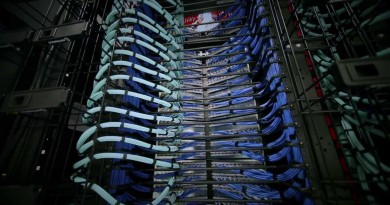Data Center Electrical Systems
Data Centers are growing very fast. The Reason? All information is managed easily and are now critical for business. To keep a data center more stable and reliable, the electrical system plays a key role. One should be careful enough while planning for an electrical system which is going to give life to their data center. A few requirement and parameters of an electrical system should be fulfilled to make it a preferred one. Data Center electrical systems present unique challenges for the application of electrical equipment. These challenges, such as multiple operating modes, must be carefully implemented if the desired system performance under normal and abnormal conditions is to be achieved.
Significant Impact of AC Power
The availability of business systems at data center is significantly impacted by AC mains power quality. The degree to which power quality affects business systems depends on many factors, which include:
1. The quality of the electrical power
2. The downtime caused by factors unrelated to power
3. The ability of the business systems to recover from power problems

Typical Electrical System Diagram for Data Center
In planning for a data center electrical system considering these factors to would avoid any problem,
Electric System Consideration Factors
- Should be designed to provide 100% availability.
- Should match the standards set by vendors in that region.
- Should have a robust monitoring system so that any potential problem can be reported in time or prior so that it can be taken care of by experts.
The typical electrical diagram for data center power system highlights the following advantages to data center business systems.
Advantages of Data Center Business System
- Redundant power Feeds which normally comes from regional or local electrical system.
- Redundant AC Generators to provide enough power to run the complete facility.
- Redundant UPS to provide uninterrupted supply to racks and other equipment.
- Robust fail-over systems which take care of any failure in system.
- Robust monitoring system to monitor, measure electrical power drawn by the units.
- As a data center has equipment which emits heat at large scale and needs enough cooling to safeguard systems. Cooling leads to extra requirement of electrical energy.
Data Center facility shall be capable of self surviving in case of any disaster shall be able to supply power to all equipment for considerable amounts of time (It may cover a couple of days to a few weeks) depending on business type. and a typical rack consumes 12-18KVA power and needs 75% more power to cool the same floor space. Choosing the right type of power not only can impact availability but also can affect the revenue of the business organization.
All this comes at a cost. These growing data centers have an impact on the environment and have a considerably large carbon foot print. Considering our social responsibilities, minimizing power consumption by optimizing on data center resources becomes crucial like using RECs which are derived from non-conventional resources.
Conclusion:
From the information presented here, we can derive that there are many factors and options to consider when selecting an electrical power type and capacity. Selecting the wrong type or capacity can result in significant delays, unplanned downtime, and subsequent loss of revenue and/or productivity. Fortunately, manufacturers generally make it reasonably straightforward to select the right combination of cables and connectors for most devices. If a knowledge of basics presented is acquired an analysis of requirements can be established.
You can also keep up to date with current trends and technology by visiting Data Center Talk where we keep you informed on important changes as they occur.

